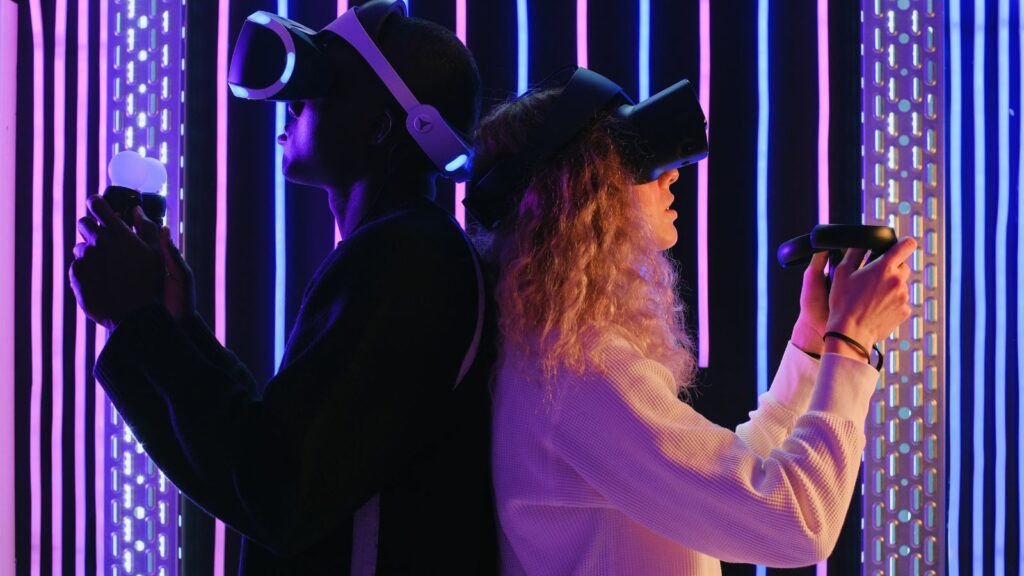In the ever-evolving world of gaming, technology plays a pivotal role in shaping immersive experiences that captivate players worldwide. The video delves into the intricate ways technology enhances gaming, from cutting-edge graphics to sophisticated AI. It highlights how these advancements create not just visually stunning environments, but also dynamic and interactive gameplay that keeps players engaged.
As the gaming industry continues to grow, developers harness the power of technology to push boundaries and redefine what’s possible in virtual worlds. The video explores how technologies like virtual reality and augmented reality are transforming traditional gaming, offering players a more interactive and lifelike experience. By integrating these innovations, the gaming landscape becomes a playground of endless possibilities, where players can lose themselves in new realms and narratives.
How Is Technology Used In Gaming According To The Video?
Advancements in gaming technology transform the way players interact with virtual worlds. Graphics processors improve visual fidelity, offering players lifelike environments with high-resolution textures that enrich gaming experiences.  Modern GPUs allow for more detailed and complex scenes, making games visually captivating. Artificial intelligence in games adapts player interactions, creating responsive and dynamic environments. AI algorithms simulate behaviour patterns in non-player characters (NPCs), enhancing their realism and depth. These intelligent NPCs provide challenging encounters, adapting strategies based on player actions. Virtual reality headsets immerse players by providing 360-degree views, creating a sense of presence in the game world. VR technology tracks head and body movements, allowing for intuitive control and a more engaging experience. Players explore worlds in a first-person perspective.
Modern GPUs allow for more detailed and complex scenes, making games visually captivating. Artificial intelligence in games adapts player interactions, creating responsive and dynamic environments. AI algorithms simulate behaviour patterns in non-player characters (NPCs), enhancing their realism and depth. These intelligent NPCs provide challenging encounters, adapting strategies based on player actions. Virtual reality headsets immerse players by providing 360-degree views, creating a sense of presence in the game world. VR technology tracks head and body movements, allowing for intuitive control and a more engaging experience. Players explore worlds in a first-person perspective.
Technological Advancements in Gaming
Technology has propelled the gaming industry into new dimensions, offering enhanced and diversified experiences for players through various innovative advancements.
Graphics and Visuals
Graphics advancements revolutionise gaming by delivering photorealistic visuals. Games now feature high-resolution textures and sophisticated lighting effects, creating lifelike environments.  Technologies like ray tracing simulate real-world lighting, enhancing immersion by adding depth to visual scenes. Advancements in graphics processing units (GPUs) boost rendering capabilities, enabling developers to create highly detailed and expansive game worlds. Virtual reality (VR) transforms gaming by immersing players in fully interactive environments. VR headsets offer 360-degree views, allowing for seamless movement and intuitive control within virtual spaces. Augmented reality (AR) blends digital and real-world elements, enhancing gaming by overlaying digital features onto physical surroundings. Popular AR games, such as Pokémon GO, showcase how technology bridges virtual content with reality, fostering new types of interactive gameplay.
Technologies like ray tracing simulate real-world lighting, enhancing immersion by adding depth to visual scenes. Advancements in graphics processing units (GPUs) boost rendering capabilities, enabling developers to create highly detailed and expansive game worlds. Virtual reality (VR) transforms gaming by immersing players in fully interactive environments. VR headsets offer 360-degree views, allowing for seamless movement and intuitive control within virtual spaces. Augmented reality (AR) blends digital and real-world elements, enhancing gaming by overlaying digital features onto physical surroundings. Popular AR games, such as Pokémon GO, showcase how technology bridges virtual content with reality, fostering new types of interactive gameplay.
The Role of Online Connectivity
Online connectivity drives evolution in gaming, facilitating global interaction and broadening access to diverse gaming experiences. It serves as a backbone for various features that define modern gaming.
Multiplayer Gaming Experiences
Online connectivity enables multiplayer gaming by connecting players worldwide. Popular games like “Fortnite” and “Call of Duty” leverage this technology to allow real-time collaboration and competition. Players form teams, strategize, and engage in dynamic battles within immersive environments. Communication tools such as voice chat and instant messaging support coordination, enhancing gameplay. As broadband speeds improve, seamless interactions with minimal latency become more feasible, creating a smoother gaming experience.
Streaming and Cloud Gaming Platforms
Streaming and cloud gaming platforms transform the way players access games. Services like Google Stadia and NVIDIA GeForce NOW use high-speed internet to stream games, eliminating the need for powerful local hardware.  Players experience high-quality graphics and low latency regardless of device specifications. This shift reduces barriers to entry, allowing broader participation in gaming.Subscription models further expand access by offering extensive game libraries without purchasing individual titles. Connectivity is central to this ecosystem, ensuring smooth and responsive gameplay across various devices and networks.Virtual reality elevates engagement through spatial audio and haptic feedback, immersing players in lifelike settings. Additionally, motion capture technology brings authenticity to character movements, enriching storytelling with natural animation.
Players experience high-quality graphics and low latency regardless of device specifications. This shift reduces barriers to entry, allowing broader participation in gaming.Subscription models further expand access by offering extensive game libraries without purchasing individual titles. Connectivity is central to this ecosystem, ensuring smooth and responsive gameplay across various devices and networks.Virtual reality elevates engagement through spatial audio and haptic feedback, immersing players in lifelike settings. Additionally, motion capture technology brings authenticity to character movements, enriching storytelling with natural animation.

